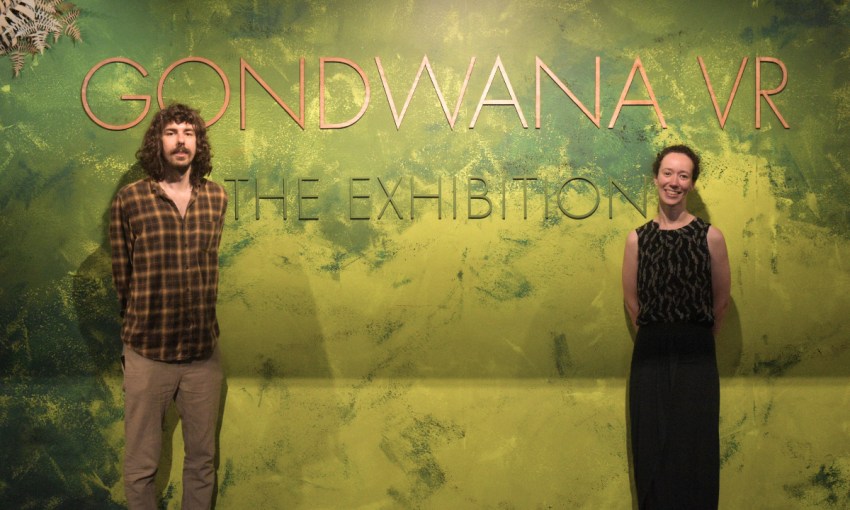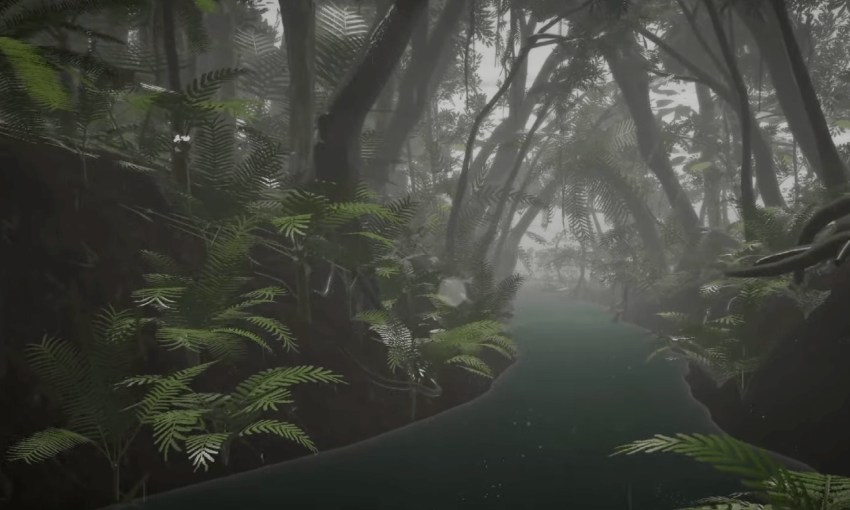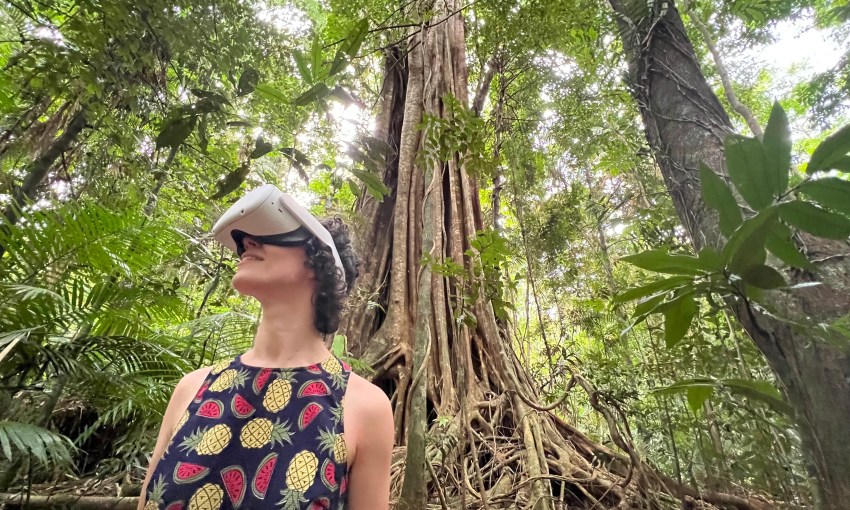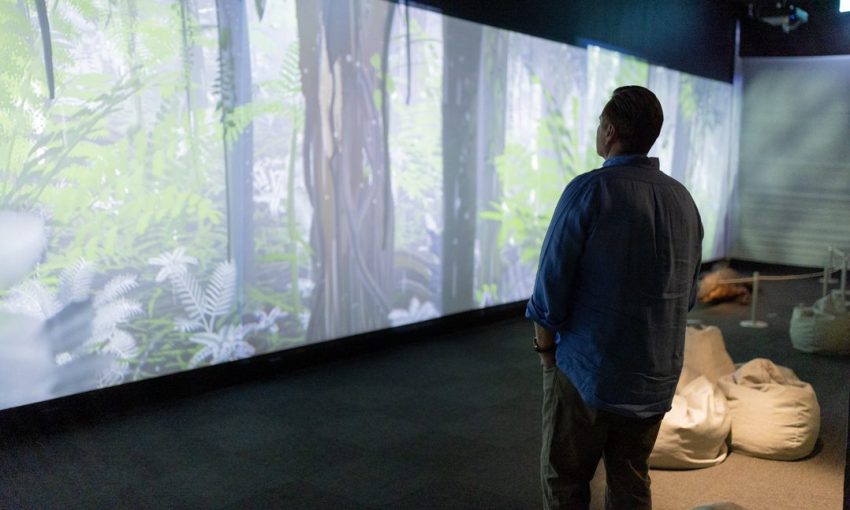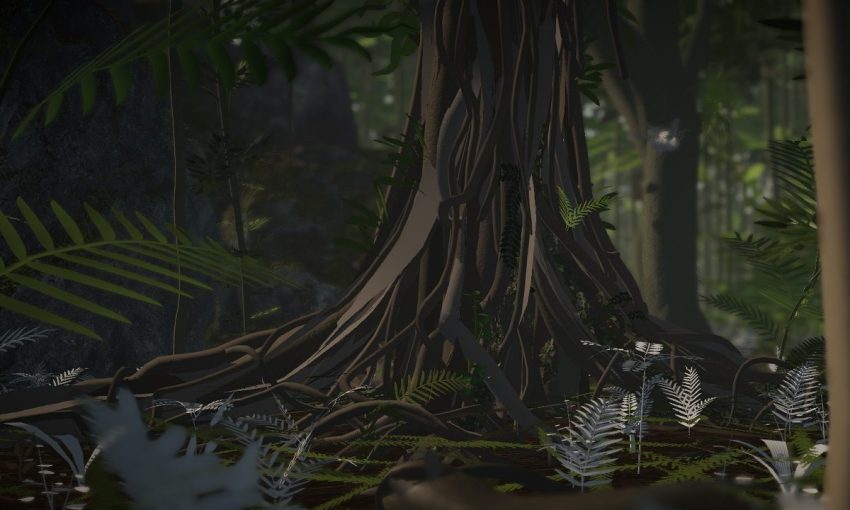For the first time in its 167 year history, the South Australian Museum will open its doors for 48 hours for GONDWANA VR: The Exhibition as part of the Adelaide Festival.
A night at the SA Museum
Created by producer and director duo Ben Andrews and Emma Roberts, who are based on Wathaurong country in regional Victoria, the GONDWANA VR exhibition seeks to bridge the urban-natural divide by bringing the wonders of the Daintree Rainforest to virtual reality.
GONDWANA has toured globally, and in Australia it has been shown in Melbourne at the Australian Centre for the Moving Image as well as in the Daintree in an informal showing.
Ben says that in each location the exhibition is different.
“I think one of the great strengths of GONDWANA is that it’s a very modular piece – it can be so many different things,” he says.
“It can be just a headset, it can be just the projection on the screen, or it can be something more embedded.”
The zero-waste exhibit offers an insight into how the ecosystem evolves over 100 years (1990-2090). Visitors can explore a vibrant virtual world filled with diverse flora and fauna as they witness the subtle patterns and dramatic changes that occur over time as climate patterns, seasons and biodiversity fluctuate.
“Everyone is co-present within the same rainforest. So, if there’s eight people in the headsets and that projection screen as well, you might catch eight people wandering around,” says Emma.
The exhibition is the culmination of five months of research that Ben and Emma conducted in 2019 in the Daintree Rainforest and surrounding wet tropics. It’s the largest rainforest in Australia, which has survived for 180 million years despite changes in climate and vegetation.
During their time staying in the world heritage-listed forest, the duo experienced it all, from record-breaking floods to fires, extreme drought, and a heatwave that killed thousands of flying foxes.
“It was a real wake-up call beyond just looking at data or stories you hear. It was us being on the ground and seeing that play out in a real way,” Emma tells CityMag.
“It was this real disrupt between this ancient, ancient forest – and you could feel the power and the kind of Jurassicness of being there – but also, knowing that things are speeding up so much, it’s becoming this much more unstable place.
“So, we had kind of front-row seats to that, working with the community and watching it play out.”
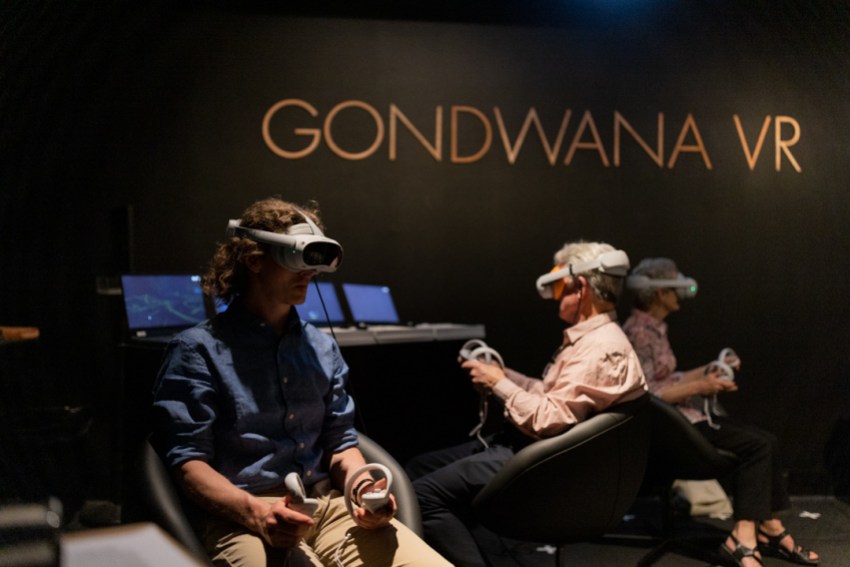
GONDWANA takes you on a virtual reality experience of the Daintree Rainforest. Image supplied.
Emma says that one of the most effective ways to get people to act on climate change “is to take them out, get them on a bus, and drive them out into the natural world,” an experience she and Ben have tried to replicate in GONDWANA VR.
“They have this beautiful experience in nature and then that’s something that can shift their opinion. But that’s very hard to do at scale, it’s also very hard to get people that aren’t already interested in that side of things as well because they have to agree to get on the bus,” she says.
“So, one thing that we see in GONDWANA as being helpful, and virtual reality more generally as being helpful, is twofold: one is that it can bring a sense of these incredible environments into a city space to people that might not have time or capacity, or just the means to get out.
“But then also, because it is such a novel technology, you can get people who wouldn’t ever get on the bus in the first place.”
Engagement plays a crucial role in the exhibit. As time goes on, the rainforest begins to die, but the more time people spend interacting with the exhibit, the more resilient the forest becomes to these destructive changes.
Ben explains that over the two-day period, you can see the forest evolving in a new way in real time.
“Each cycle is itself completely unique and unrepeatable,” says Ben.
“The 48-hour showing really kind of stretches that time and makes every moment feel much more important because you know that if you come back in the middle of the night or the next day, what you’ve experienced already will have shaped the environment in a particular way.”
Emma says that when GONDWANA VR held its two day marathon in Melbourne, visitors arrived before their workday and after enjoying a drink in the evening, while others spent the entire night at the museum.
“There was a picnic in space at 4am,” says Emma.
Summarising the message he hopes visitors take from the exhibition, Ben says that “I think one key part of GONDWANA VR is that, yes, it’s dealing with climate future, and yes, the data sets are not looking good, but there is still hope,” says Ben.
“What we have now is very, very precious and we can lose it, but we can, through collective action, band together to help what seems sometimes as inevitable.”
GONDWANA VR opened in December and is open daily until March 17.
The museum will also host a rolling program of free and ticket family-friendly events throughout the 48-hour period, including meditation and yoga sessions, live music, science talks, drumming workshops, and a film screening of the classic animated film FernGully: The Last Rainforest.
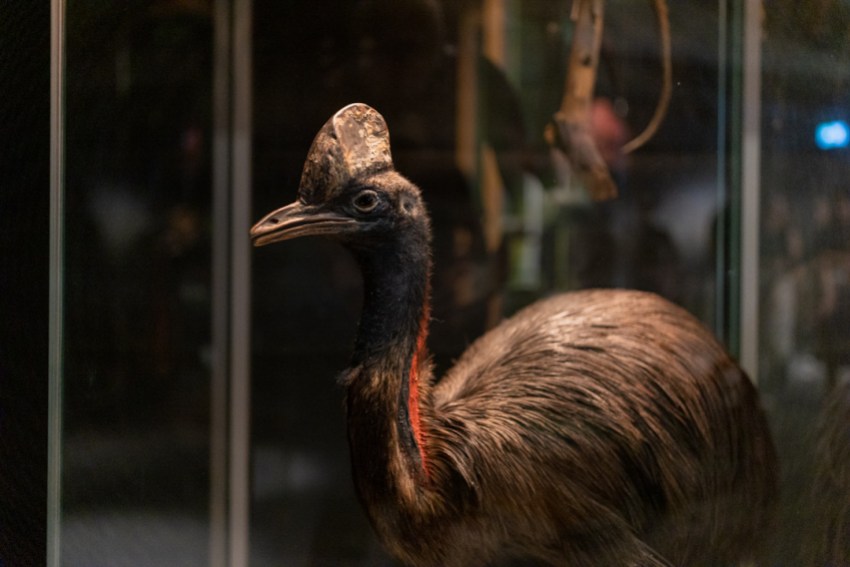
GONDWANA VR is open until March 17. Image supplied.



